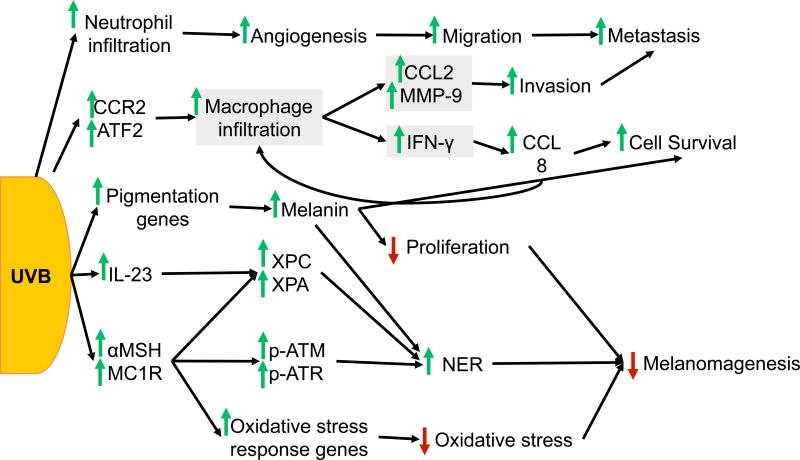Figure 1. UVB response in melanoma.
UVB exposure triggers macrophage and neutrophil infiltration into the skin. Upregulation of CCR2 and ATF2 in melanocytes promotes recruitment of macrophages into the skin, which in turn stimulates production of CCL2, MMP-9, and IFN-γ in macrophages. IFN-γ signaling from macrophages promotes a positive feedback loop between melanocytes and macrophages, in which melanocytes upregulate CCL8, a CCR2 ligand, and promote further recruitment of macrophages. The inflammatory response created by macrophage and neutrophil recruitment promotes angiogenesis, as well as melanoma cell invasion, survival, and metastasis. UVB also independently regulates melanin production and MC1R signaling. Induction of pigmentation genes and subsequent increase in melanin production following UVB increases cell survival and NER, but decreases proliferation and ultimately, melanomagenesis. Signaling through MC1R is induced by UVB and activates DNA damage response. Signaling through αMSH and MC1R promotes phosphorylation of ATM and ATR, upregulates XPC, and promotes XPA recruitment to stimulate NER. αMSH also activates oxidative stress response genes to reduce oxidative stress in melanocytes/melanoma. UVB-induced expression of IL-23 also activates XPC and XPA to induce NER. IL-23 signaling, melanin production, and MC1R signaling can all inhibit melanomagenesis induced by UVB.

